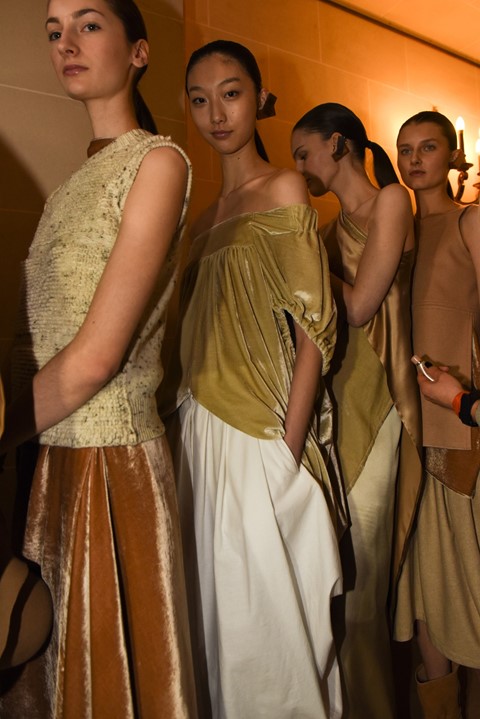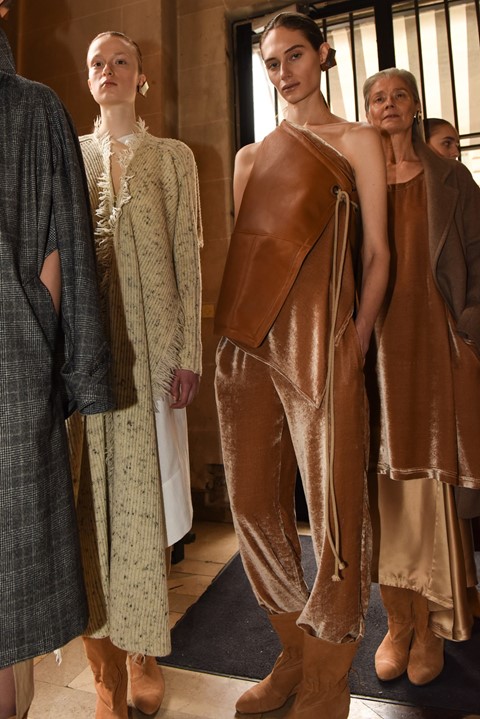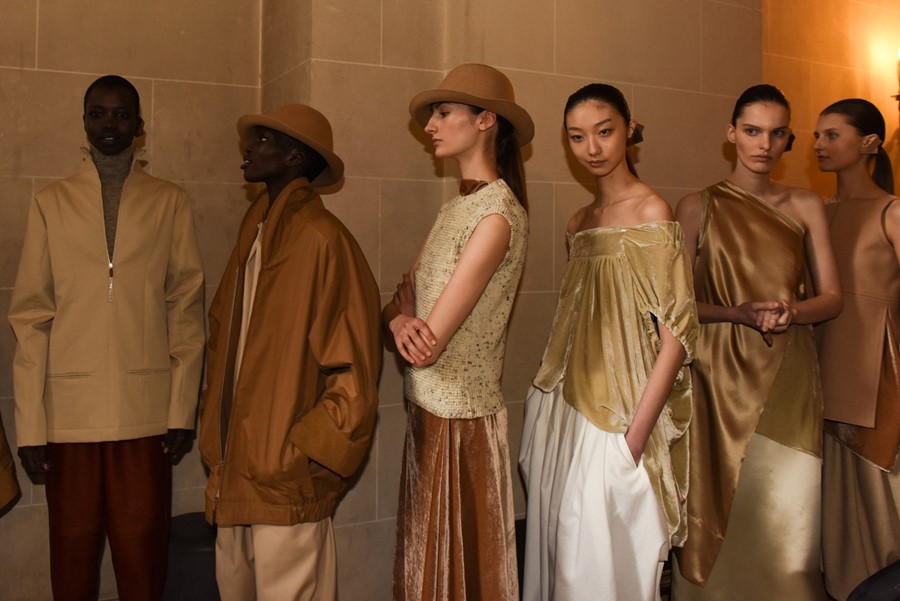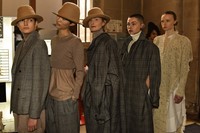"Wearing these volumes, you become a subject. You’re never just a passive wearer." Dal Chodha considers the label quietly revolutionising our approach to volume
A raft of quiet, cerebral clothes has started to infiltrate our chaotic world. Wide legged trousers in heavy-weight cotton twill, linen shifts, double-button leather blazers and soft, flat shoes – they are all silent assassins of today’s mechanical trends. Every cuff, pleat and curve gently transcend the pomposity of fashion’s increasingly hysterical pace.
The latest label to exemplify this fresh, sensual minimalism dates back some 80 years. The Czechoslovakian businessman Jan Nehera first revolutionised ready-to-wear in the 1930s by developing a vertically integrated clothing brand sold by more than 130 retailers across three continents. World War Two halted production and in the 1990s Ladislav Zdut – an expert in marketing and brand management – acquired the company name, appointing Samuel Drira as its first ever creative director in 2014.
Given just two months to prepare his debut, Drira flew to the label’s home in Slovakia to find an office, two people and some computers. The business model was ready yet there were no visual codes. Free from the shackles of a Bar jacket or Le Smoking suit, Drira began to create a language for the brand almost from scratch, living and working between Bratislava and Paris. “In Bratislava you feel surrounded by silence and calm. You don’t feel pressure in the same way as you would in Paris,” he says. “In Paris there’s the constant chance that you might walk into a café and see a friend who is also a designer. Working on the collection in Bratislava, this distance, creates a kind of romanticism because the approach is more remote. I remember Raf using this word ‘incubation’ when he left Dior and I think about that a lot. You want to make clothes that last for more than one season, so they better be good, you know? There are so many things that as a designer you aren’t able to control. I never understood that as well as I do now.”
The clothes are romantic, but not girlish. There’s a tribal, rational veracity to what Drira and his peers are doing. Their go-to fabrics are boiled wools, Japanese cottons, rich supple leathers. The colour palette of choice is always earthy, tonal, grey and sand. These are incredibly bold clothes often misread as plain. “The less information you get about the person from what they are wearing the better,” he says. “I talk for months with the designers about what the touch will be, how heavy a garment might be, how dry? When I got here I wanted to start with a white shirt. I knew that if we got that right then we would have a frame that could then be extended to a dress or a coat. It’s really about that; it’s about how we make the clothes as un-designed as possible.”

The Nehera shirt is in washed cotton. The colour is soft. It is not oversized but it is not fitted – it falls, in every single way, in the in-between – a space that expertly explains what Drira does. Nehera is ravishing with its starkness.
As the co-founder of the cult Paris bi-annual Encens, Drira has worked as stylist and consultant to a group of designers including Christophe Lemaire, Damir Doma and Bruno Pieters, all of whom share the same vernacular. “I am focused on the proposal of the clothes. It is about technique for me. They have to have a gesture. Even if they have a scarf that drapes around the waist, they have to do something, something that the wearer will discover and interpret in their own way.” At Nehera this manifests as a contrast between things that are shapeless: something that cannot even be labelled a shirt or a dress; something on top providing structure and protection.

Drira’s nomadic, artisanal aesthetic is there in all of his work. As a teenager he read Marcel Proust whilst studying at École des Hautes Études en Sciences Sociales in Paris and would spend his lunchtime flicking through the French edition of Marie Claire. “A lot of what I was reading from Proust talked about the way we construct personal identity by what we choose to wear. And then at the same time, Marie Claire in the 1980s was a kind of feminist magazine. The text was very important! The editorials would say “right, you are not going to throw away your clothes from last season. We are going to show you how they can work for this new season.’” The credits were an explanation: ‘don’t be afraid of this, we will show you the meaning of this… don’t be afraid of this proportion or this volume,’” he says. “I remember when Christophe first started and people would come into the store and try things on and feel really uncomfortable because the volume was so new for them.”
So why are people so afraid of volume? Looking at Nehera’s crisp, cotton poplin maxi skirts, oversized waxed cotton jackets, the round cut trousers in a linen-denim mix and asymmetric tunics, just what is it about these elegant clothes that might frighten people? “It’s related to gesture actually because with lots of clothes, you close the last button and you’re done – you are ready! – but with volume, you have to make your own interpretation. It is completely related to movement. Wearing these volumes, you become a subject. You’re never just a passive wearer.” You have to do the work.






